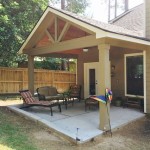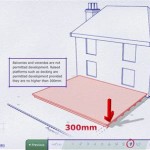How to Build a Pea Gravel Patio on Sloped Ground
A pea gravel patio offers a charming and low-maintenance alternative to traditional concrete or paver patios. Its natural aesthetic blends beautifully with various landscaping styles, while its porous surface allows for effective drainage, particularly on sloped ground. Building a pea gravel patio on a slope can be a rewarding DIY project, adding both functionality and visual appeal to your outdoor space.
Site Preparation and Grading
Creating a stable base is crucial for a successful pea gravel patio. The first step involves clearing the desired area of any vegetation, debris, and existing landscaping elements. After removing the unwanted materials, the ground must be graded to ensure proper drainage and a level surface.
For a sloped patio, a slight gradient is necessary to direct water away from the house. This can be achieved by using a level and a rake to create a gentle incline. Ideally, the slope should be between 1% and 2%, meaning that for every 100 feet of length, the elevation drops by 1 to 2 feet. This gradual slope ensures effective drainage without creating an overly steep or unstable surface.
Once the ground is levelled, consider installing a perimeter edging to contain the gravel and define the patio area. A variety of materials can be used for edging, including landscaping timbers, pavers, or even natural stones.
Compaction and Base Layer
After grading, the soil must be compacted to prevent settling and future unevenness in the pea gravel. This can be achieved using a hand tamper, a plate compactor, or even a heavy roller. Compacting the soil effectively ensures a stable base that can withstand the weight of the gravel and foot traffic.
Next, a layer of compacted gravel is added to enhance drainage and create a more stable foundation. This base layer typically consists of crushed gravel, ranging in size from 1/2 to 1 inch in diameter. The depth of this layer can vary depending on the soil conditions and the desired thickness of the final pea gravel layer, but it should usually be at least 4 inches deep.
Spread the crushed gravel evenly across the prepared area, ensuring that the layer is uniform. Using a rake or a landscaping tamper, compact the gravel layer firmly to provide a solid foundation for the pea gravel.
Pea Gravel Installation and Finishing
With the base layer in place, it's time to install the pea gravel. Opt for pea gravel with a consistent size, typically ranging from 1/4 to 1/2 inch in diameter. This size provides a comfortable walking surface while maintaining good drainage.
Spread the pea gravel over the compacted base layer, achieving a depth of at least 2 to 3 inches. Use a rake to distribute the gravel evenly across the patio surface. For a more natural look, consider creating gentle curves or undulating patterns in the gravel.
Once the pea gravel is laid, it's important to edge the patio with a material that complements the overall design. This will help to prevent the gravel from spilling onto surrounding areas and maintain a neat, defined space.
Ongoing Maintenance
A pea gravel patio requires minimal maintenance to keep it looking its best. Periodically rake or sweep the gravel to remove debris and maintain its clean appearance.
In areas with heavy rainfall or snow, the gravel layer may compact over time. To restore its drainage and evenness, consider adding a fresh layer of pea gravel to the patio every few years. By ensuring proper drainage and maintaining the gravel's depth, you can extend the life of your pea gravel patio and ensure its long-term stability.

How To Make A Pea Gravel Patio At Home In The Wildwood

Hillside Gravel And Timber Path Done Digging

How To Make A Pea Gravel Patio At Home In The Wildwood

How To Make A Pea Gravel Patio At Home In The Wildwood

Patio Diy An Easy Affordable Gravel Gold Coast Canvas

How To Make A Pea Gravel Patio In Weekend The Handyman S Daughter

Hillside Gravel And Timber Path Done Digging

Hillside Gravel And Timber Path Done Digging

Diy Pea Gravel Patio With Pavers Love Renovations

Hillside Gravel And Timber Path Done Digging
See Also








